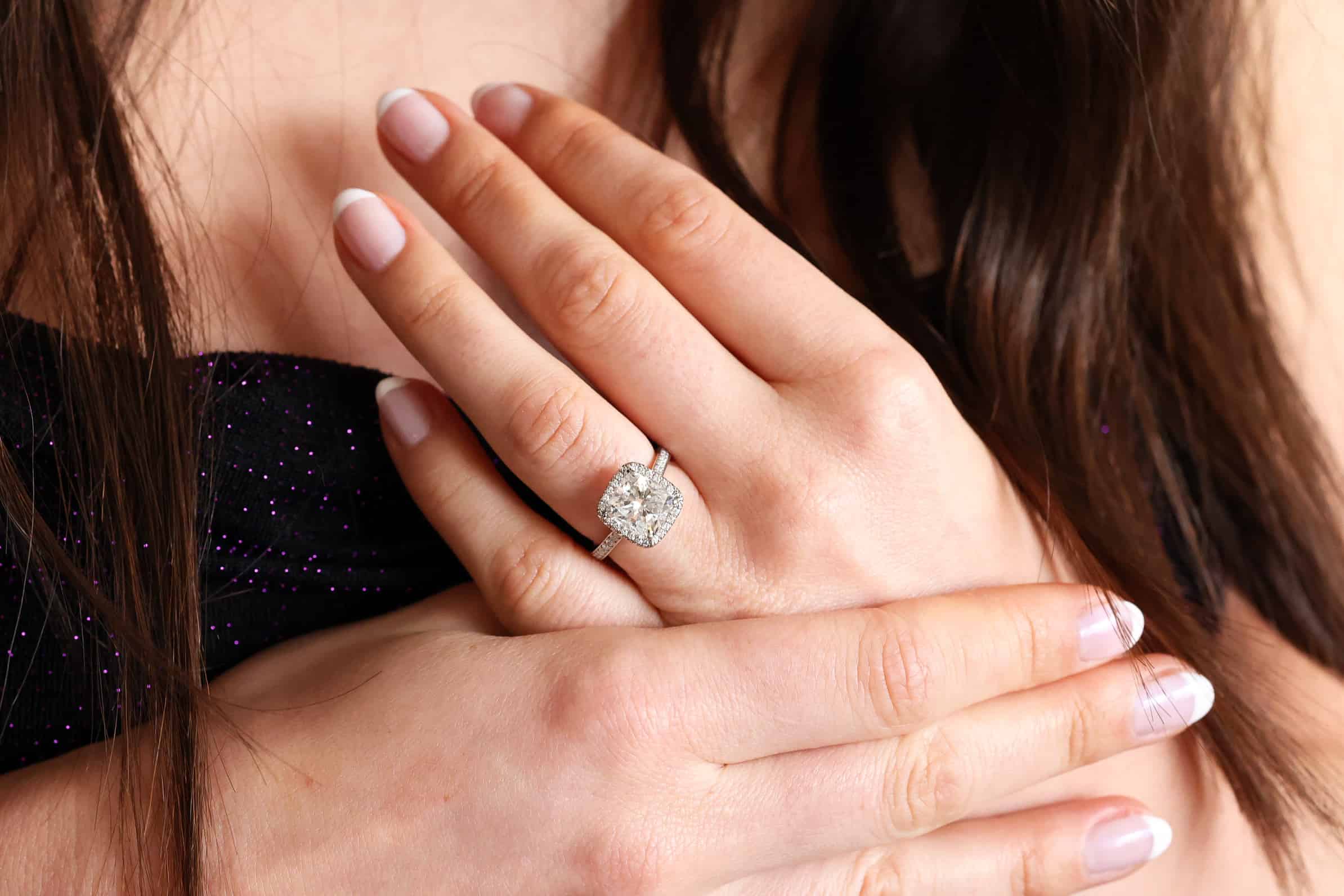If you plan to buy an engagement ring, you’ll want to consider what diamond shape best matches your style and personal preferences. The diamond shape you choose will profoundly impact the look and feel of your ring.
The classic round continues to be the most popular diamond shape, but other cuts are gaining popularity. Read on to learn about the pros and cons of these shapes so you can choose a diamond shape that suits your needs and preferences!
Round
Round diamonds are the most common type of diamond cut for engagement rings. They are an excellent choice for a classic ring with maximum sparkle.
They’re also easy to find in both vintage and modern jewels. From a simple solitaire to a halo or a sparkling cluster, there are plenty of ways to incorporate a round diamond into an engagement ring.
Another popular option is to stack two or more round diamonds on top of each other for a ring that has both a classic and trendy feel. Check out this fun cluster ring with a mix of round and marquise-cut stones on a thin band for a fun and unique take on an engagement ring that’s sure to be a conversation starter.
A round diamond is the most popular of all diamond shapes, making up almost three-quarters of all diamond purchases. This is a good thing for those who want the classic look, but it can also lead to a higher cost because a large amount of rough diamonds is needed to make them.
Princess
Princess-cut diamonds are one of the most popular styles for diamond engagement rings, and for a good reason. They offer a high brilliance and are available at a lower price than round diamonds.
However, some things to remember when shopping for a princess diamond ring. These include its shape, length-to-width ratio, and number of facets.
It is also essential to check the clarity of your chosen princess-cut diamond. A high clarity grade can help hide blemishes, color tinting, and inclusions that may be present in the stone.
The most common princess diamonds are ideal-cut, which are faceted well to maximize light dispersion and sparkle. They also have a large face-up surface area, making them appear larger than similar round diamonds.
The ideal length-to-width ratio for a princess diamond is 1.05 or less, so you can see the sides and corners of the stone without it looking off-shape. This is because the edges of a princess diamond are exceptionally fragile, so girdles that are too thin are more likely to break.
Emerald
Emerald diamond shapes are one of the biggest engagement ring trends. They are trendy among modern brides-to-be because of their chiseled facets and vintage feel.
They also come in a wide variety of settings and jewel designs. There’s something for everyone, from a simple solitaire to a paved design.
However, you may get less glitter than a round diamond. Instead, an emerald’s step-cut faceted pattern creates a sparkling “hall of mirrors” effect that can be less flashy than a brilliant round cut.
While they aren’t as flashy, an emerald is still stunning. They look beautiful with a white gold band and pave set diamonds.
You’ll want to start with a high clarity grade when looking for an emerald. This is because inclusions, or slight imperfections in the stone, tend to be more noticeable when compared to other fancy shape diamonds.
Marquise
Marquise diamond shapes are a rare breed of engagement rings, combining classic beauty with a contemporary flair. This elongated shape can be attractive for an engagement ring, especially when combined with a halo setting.
Another pro for this diamond shape is that it can make the wearer’s fingers appear longer and thinner than they are, adding a feminine touch to the ring. Women prefer this cut over other diamond shapes like round and pear-shaped diamonds.
However, this elongated diamond shape can also be more susceptible to breakage than other diamond shapes. Choosing a high-quality diamond is essential if you decide on this cut.
The best diamond for this shape should be a VS2 or higher in clarity and have good color. This can be accomplished by choosing a stone with good contrast in the center of the rock and on the sides, as this can hide any clarity flaws that may be present.
This diamond also hides any inclusions if the gemstone is well-cut and polished to perfection. This makes this diamond a popular choice for engagement rings that have halo settings, as this allows the diamond to shine without distractions.
Oval
Oval diamonds are one of the most popular shapes for engagement rings. They have a sleek and soft shape that looks beautiful in any setting, whether a delicate rose gold band with pave diamonds or a decadent platinum halo with oval diamonds.
In addition, ovals are well-suited to various styles, from modern diamond engagement rings with sparkling halos to vintage-inspired antique-inspired rings that evoke the elegance of Victorian times. They can also be cut with asymmetrical ends, so they look great in halo settings.
They’re ideal for a wide range of budgets, too — even if you’re on a tighter budget, there’s an affordable oval diamond to suit your style. Thanks to their extended form, ovals are excellent for hiding inclusions and blemishes.
The most common way to mount an oval is in a North-South setting, which flatters the finger, but East-West rings are also gaining traction. These are often paired with split bands to take advantage of the elongated shape of the diamond.
Ovals aren’t the most transparent diamond shape, and they can have a dark area on the center of the stone called a ” bow-tie. These areas can appear blue or gray, but they shouldn’t be too pronounced or noticeable to the naked eye.
